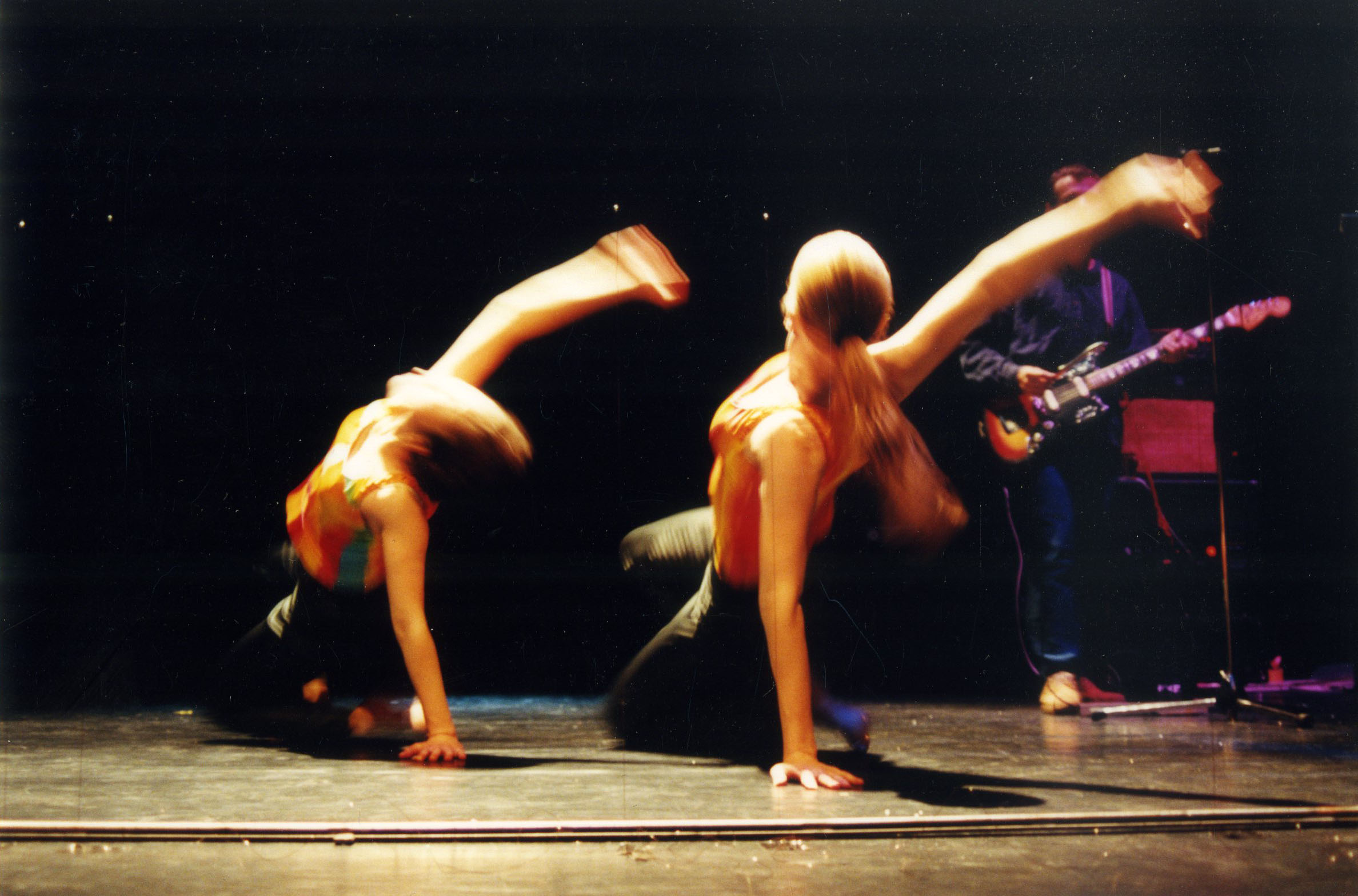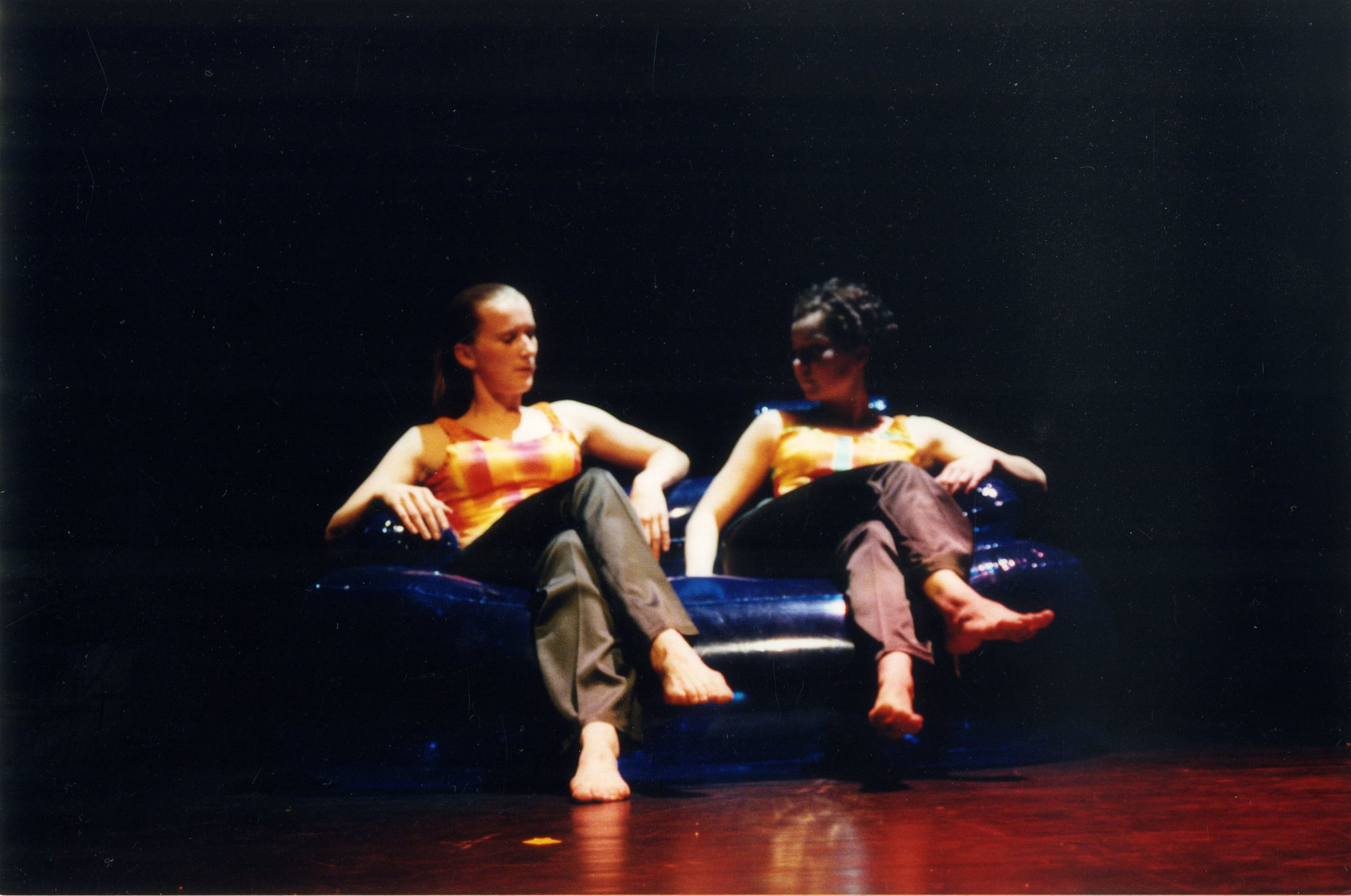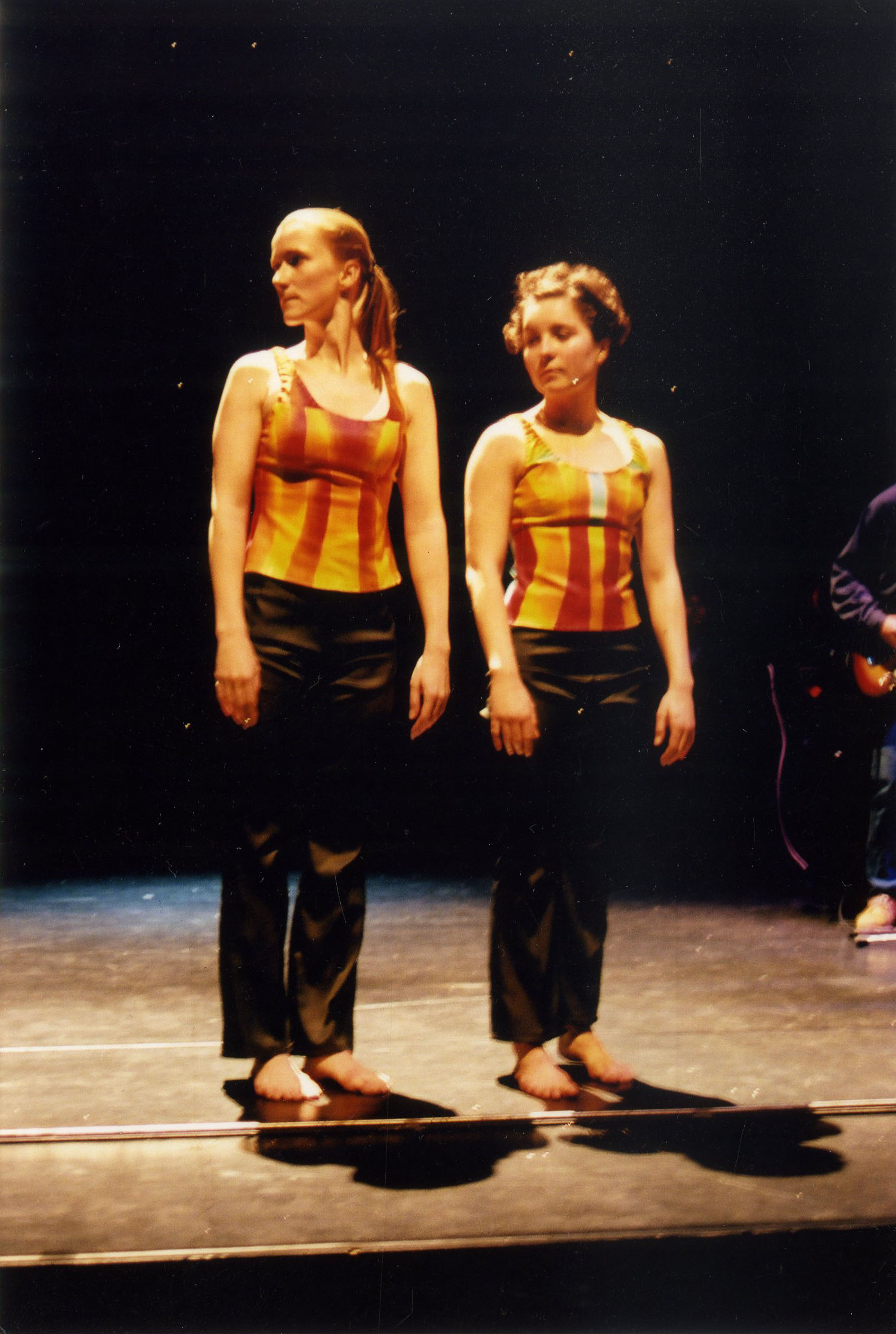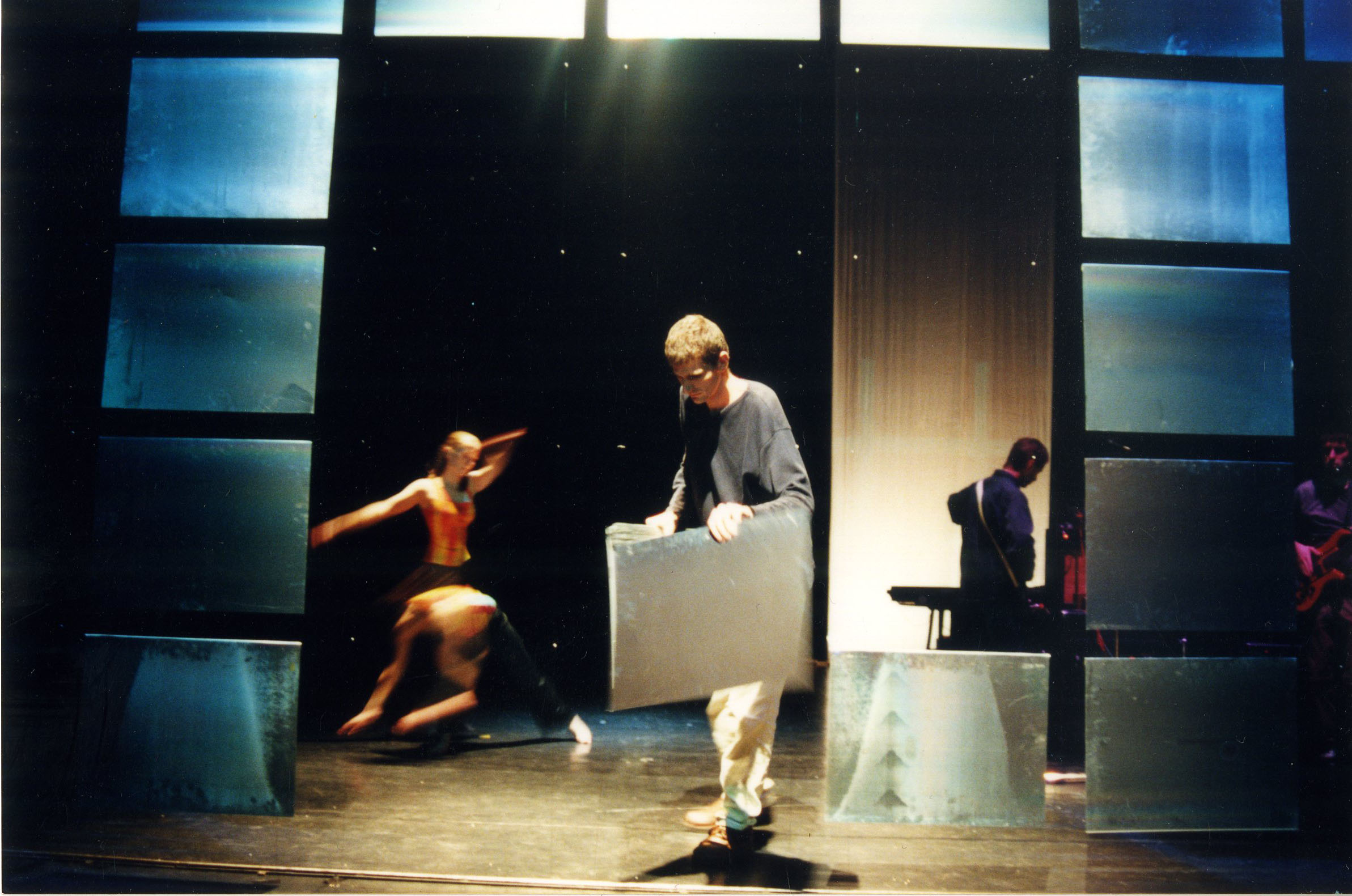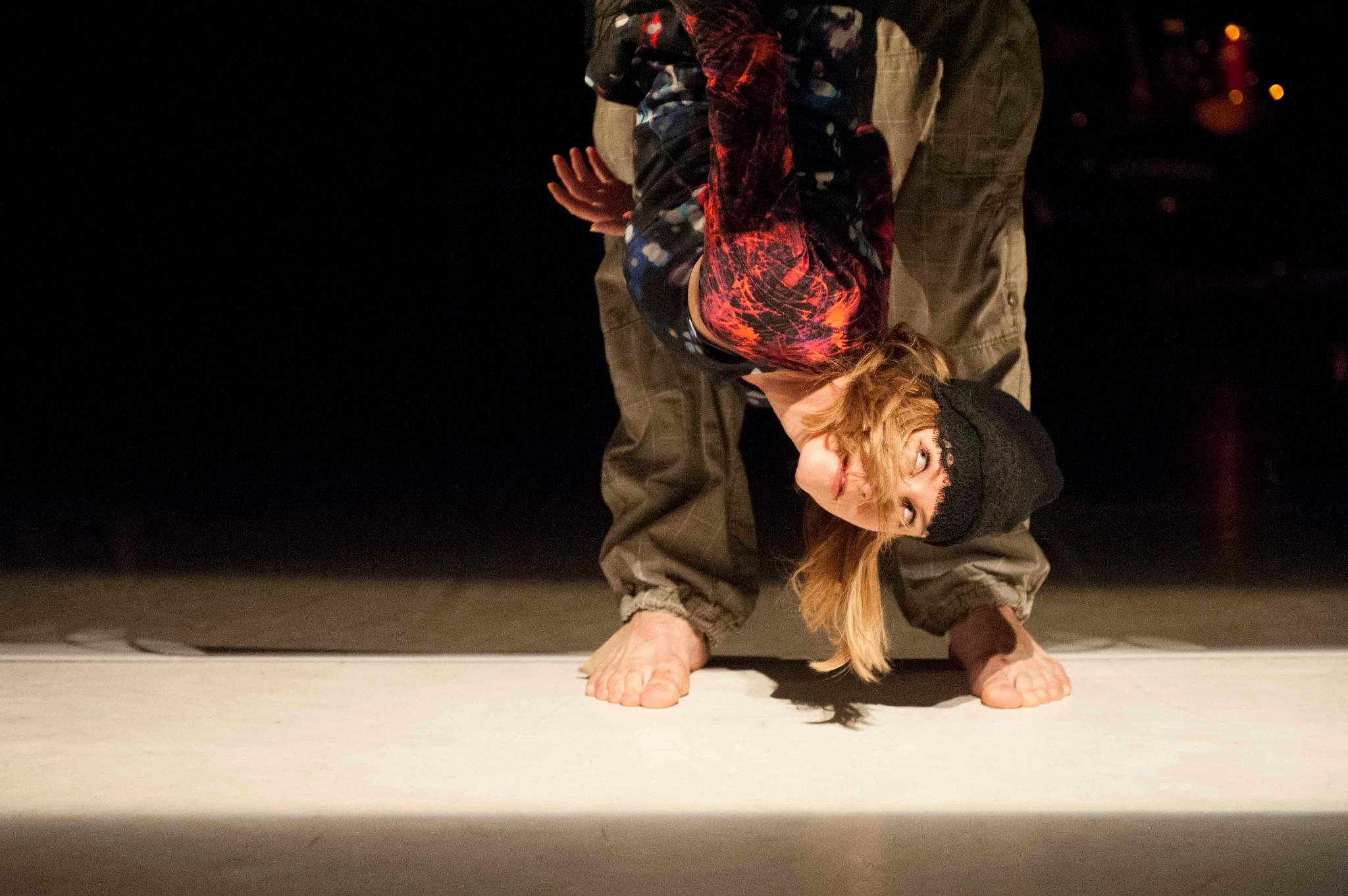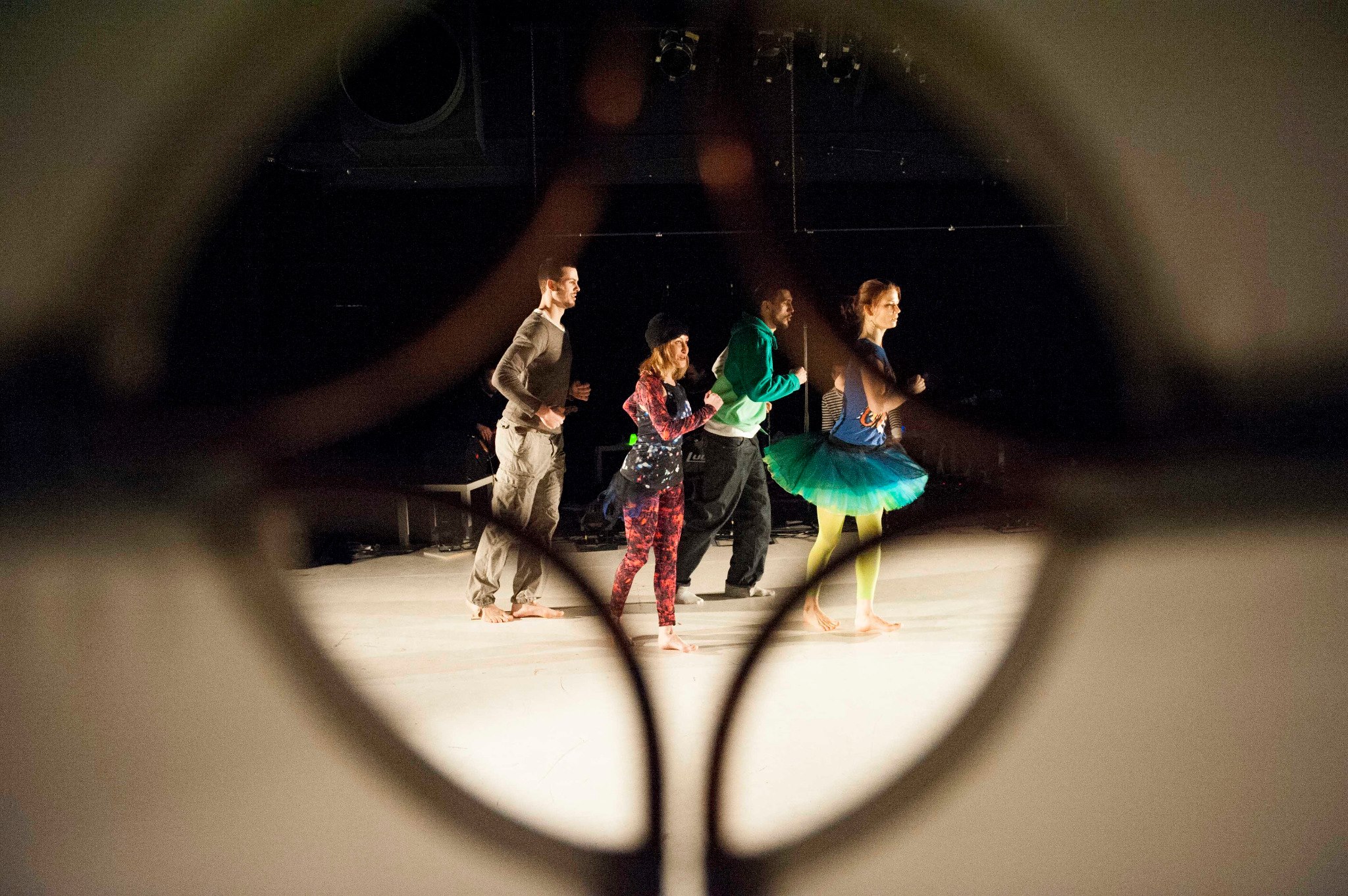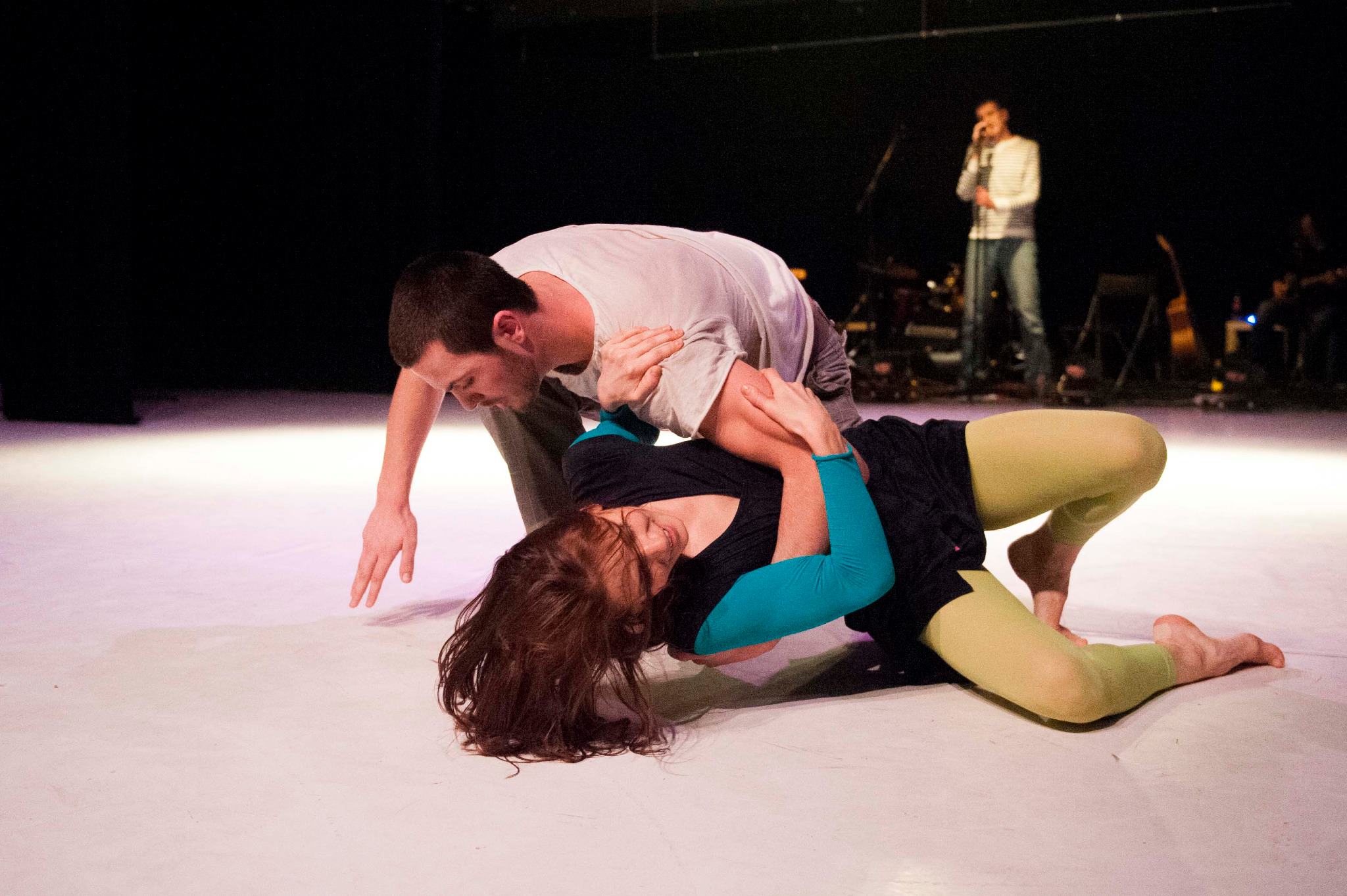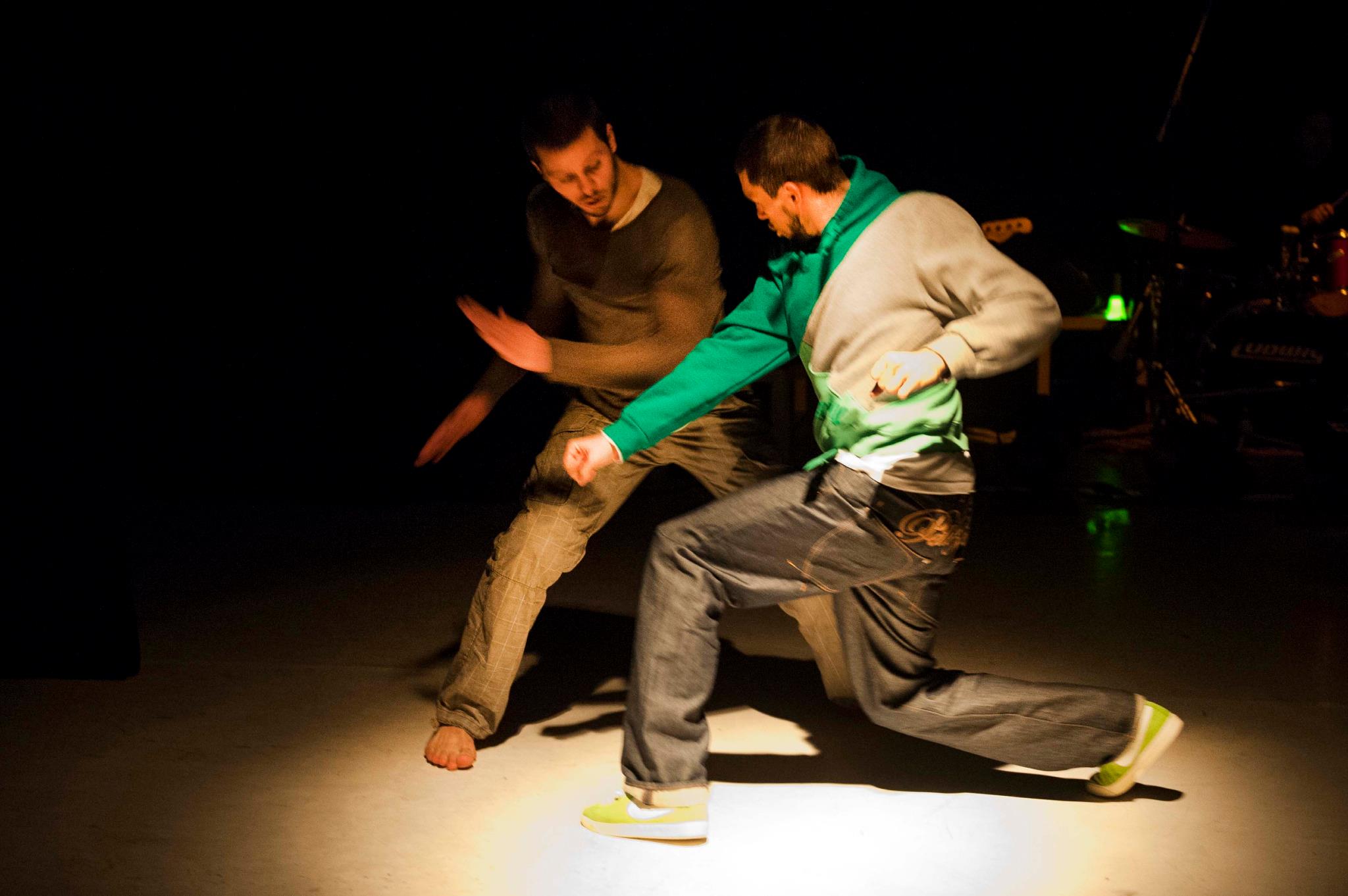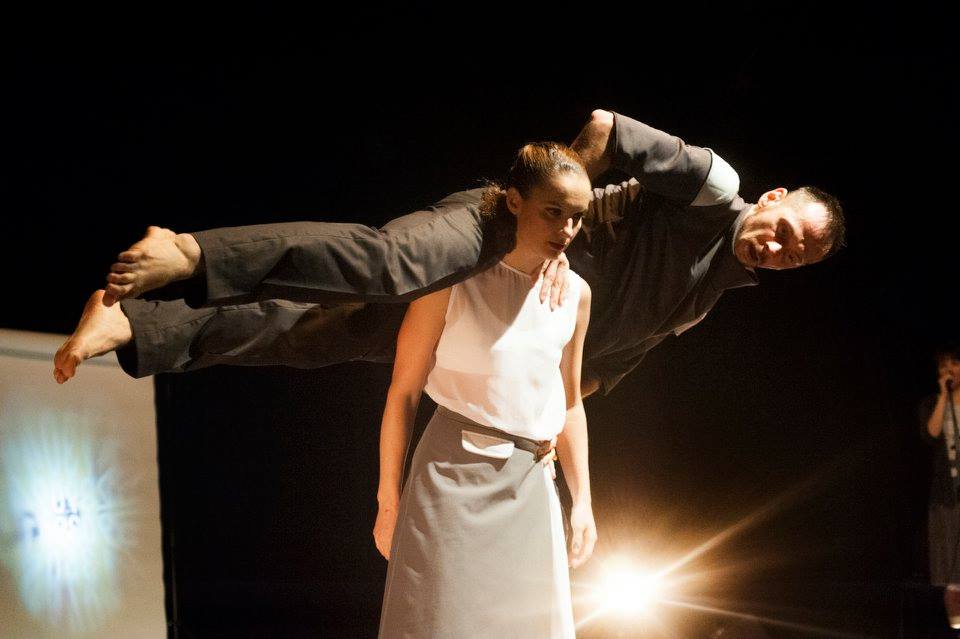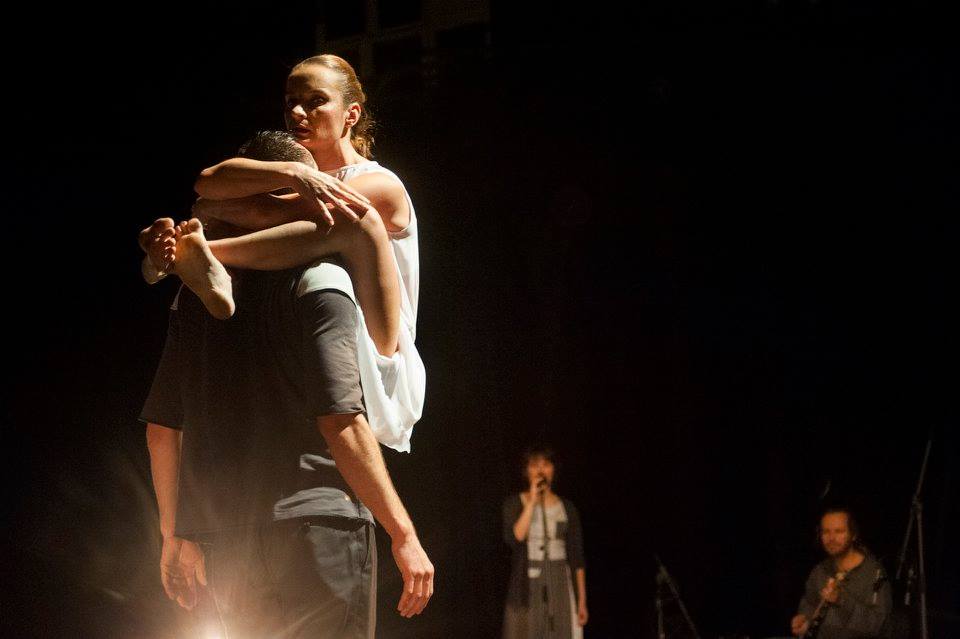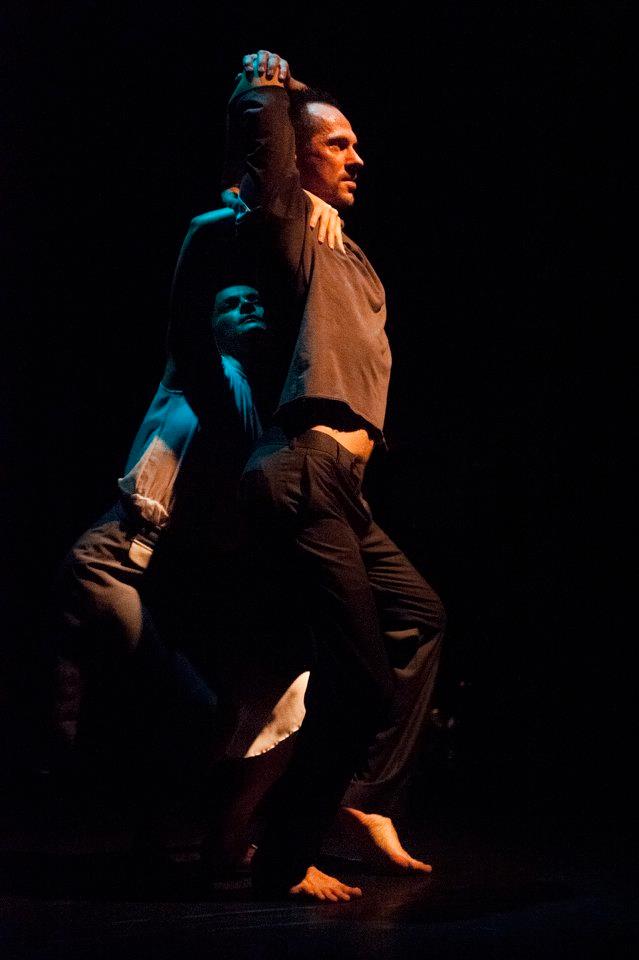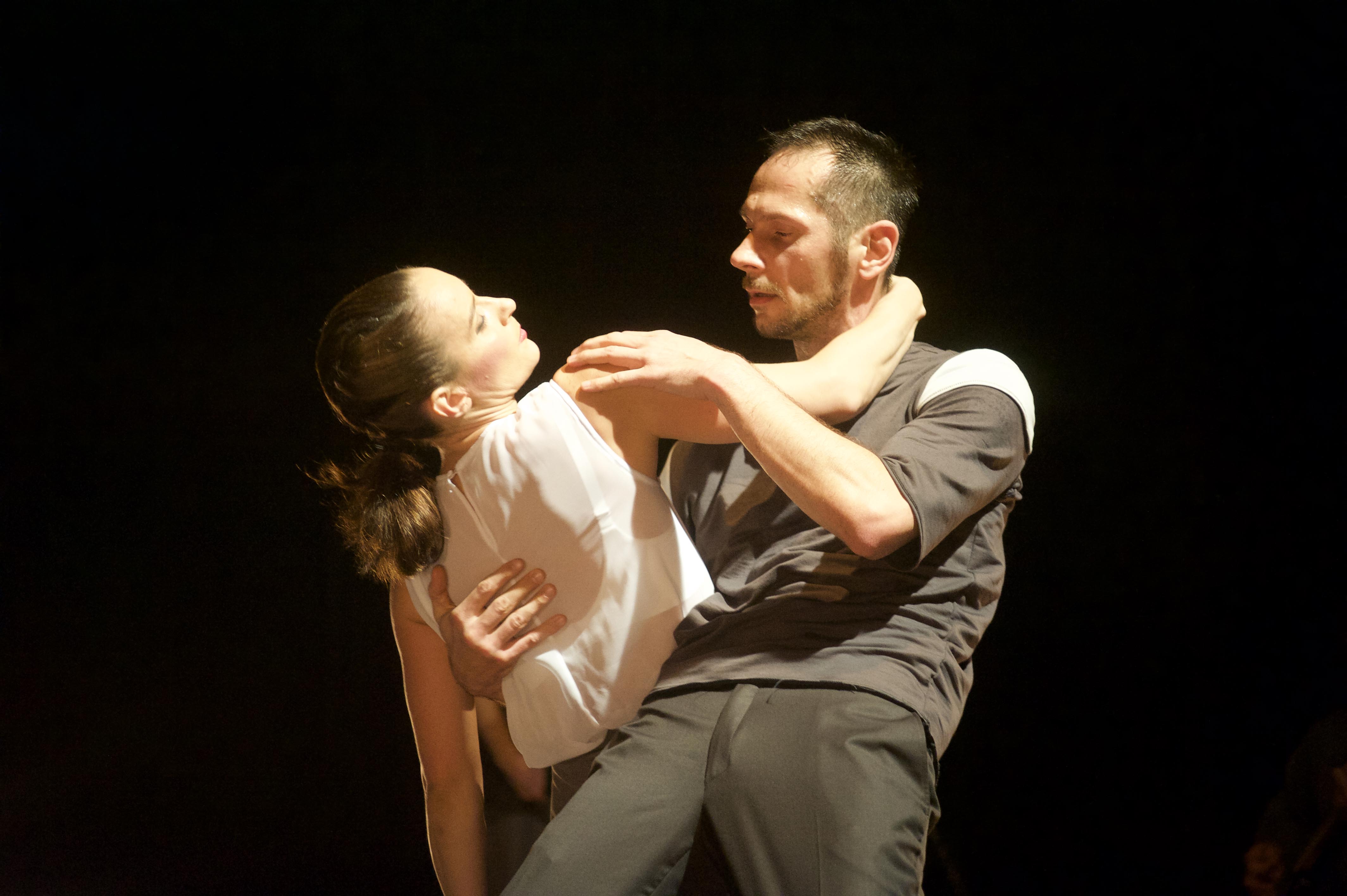A graduate from the Music and Dance Faculty of The Academy of Performing Arts in Bratislava, Ms Holinová specialised in dance and pedagogy of modern dance. As performer she was with the ensemble Allegro (1986 – 1990), the Dance theatre Bralen (1990 – 1991) and the dance ensemble a dato. She collaborated with a number of leading Slovak and international choreographers and stage directors, such as Mary Fulkerson, Marjolein Sinke, Allyson Green, Milan Sládek, Marta Poláková, Anna Sedlačková, Šárka Ondrišová, Monika Čertezni, or Jana Tereková. Ms Holinová is choreographer, dancer, tutor, dance dramaturge, and editor-in-chief of the magazine TANEC.
In duet with Milan Kozánek, Gagarin, it was already during her studies at The Academy of Performing Arts that Ms Holinová clearly defined the nature of her forthcoming work. It is particularly her approach to the contact technique and partner work that she sets out themes of relationships without emotional overcharge. She instead portrays them through the objective lens of principal interest and quest that follows after the triggering tension and conflicts. In the female duet The Crack (1999) she played out, for the first time, the theme of hiding and peeking into the inner world. She revisited the theme in the production The Gap (2012). She developed the new dimension of fragility and vulnerability vis-à-outside manipulation and abuse in her productions WATCH (2015) and WATCH NOW (2016). In 2019 she presented her work -in-progress, the project Niveau Stable.
As dramaturge she worked with the choreographer Šárka Ondrišová on the productions of 4 MEN (SND 2011), Water on the water (Theatre elledanse 2011) and FROST (Ballet Bratislava 2012); with Monika Čertezni on the project Hedy – Solo for one woman and two men (SND 2017); and with Jana Terekovoá on the production of She had 70 skirts (2018).
In 2014 she founded, together with Monika Čertezni, Daniel Raček and Anna Sedlačková, the civic group Late Harvest which brings together mature dancers. Here she created, in team choreography, the production Deliberate Waiting (Theatre elledanse 2014). In addition to excellent partner movement material, she brought in the piece tender setting of image dramaturgy.
In 1996 she played major role in founding the Association of Contemporary Dance and the international festival Bratislava in Movement – International Festival of Contemporary Dance. From 2001 to 2002 she was co-author and co-manager of the project Tanec v Aréne that regularly featured works by Slovak choreographers on stage the theatre Aréna in Bratislava. In the period of 2010 – 2013 she was managing director at the Theatre and Dance School elledanse. Since 2014 she has been editor-in-chief of the quarterly TANEC (DANCE), about the art of movement. At the same time she regularly gives dance lessons in the movement theatre LEN TAK TAK. Dancers dance here together with people with physical impairments. She created for the Theatre the production PI STORY (2015) about the history of Pisztory Palace in Bratislava.
As tutor she focuses on contemporary dance technique, improvisation, Alexander technique, and integrated dance.
Signature style:
In her work, Lucia Holinová applies the principle of improvisation and partner work which she grasps in sense of emancipation. She thus creates the illusion of liquid actions and reactions. In the architecturally structured compositions, the space thus becomes yet another element of the partner cooperation. She plays with focusing the lens on stage as a whole. On the other hand, she focuses on detail of subtle gesture. Dance and music dramaturgy in her works are interconnected. The leitmotif of the productions are often turned into metaphor in between the two. Her collaboration with the music group surrounding Vlado Holina brings into her works poetic charge. The presence of musicians on stage creates support counterpoint, an element of independent observer and commentator of the dance work.
In her dance project, the female duet The Crack (1999), Lucia Holinová created, together with Eva Klimáčková, a piece that proved a breakthrough at the time. It was largely due to the diverse typology of stimulating performers, the on-stage presence of the music group Med and original, fresh chorographic signature style. The opening scene, covered with a curtain of seemingly levitating metal squares allows, through the cracks, a sense of the dynamic variation of the dancers accompanied by the expressive singing by Tomáš Ďurovka. By removing the squares, the musicians unveil the dancer (Eva Klimáčková) and her Impressionistically illuminated solo. It is the musicians who create the lens to follow the dance actions. Prior to being unveiled, just flickering through the cracks. They similarly overlay that which has already been unveiled to open new spaces to watch. The play with the lumen of the action enables to follow the engagement of the entire cast. Ms Holinová plays with the perception of spectators, with oscillation between the media of expression and the changes in the atmosphere. The dramaturgy is constructed from variation of contrasts of the dance images and music. The dynamic dance duet becomes an image to watch, overlap, merge or of harmony. Ms Holinová’s final solo that flows into dance duet on a blue inflatable sofa and with the sofa, is a witty variation of the control of movement, self-control, total relaxation, acrobatic equilibristics, grotesque awkwardness, and beauty. Another image in the slit that shows dancing shins and feet bears subtle humour of silent farce. It resembles Champlin’s bun dance. In the finale, it is transformed into a brilliant synchronised technique of challenging rhythm. The conclusion of the production is dedicated to a still-life of dancers and musicians on the sofa, and a music composition with core lyrics.
Ms Holinová revisited the unveiling and peeping through the cracks, or slits, the public sharing of privacy and its mystification, in her dance production The Gap (2012) identified as dance & hip-hop & rock. She managed to bring together a quartet of performers of different background to create a colourful mosaic of the character types. The dance-music uses unorthodox means to capture the differences between one’s conduct in private and in public. Through the four characters and temperaments she records individual situations that differ both in terms of private sphere and public conduct, as well as in character typology. With her hard-to-miss feminine charm and witty teasing, Soňa Ferienčíková is an excellent partner for Radoslav Piovarči. In turn, he captivates with masculine acrobatics, breath-taking dynamics of movement and overall expressiveness. Michaela Nezvalová, with her ballet experience, found herself in the role of mystic apparition resembling Zephir. For the hip-hoper Miro Janík (performing under the name Otec Mirec), Ms Holinová created introverted scenes. Within the hip-hop technique thus emerge visually magical images bearing the Spielbergian aesthetics of close encounters of the third kind. The production features, yet again, the music group Med with its personal lyrics and the charisma of Tomáš Ďurovka. The set is now designed by using white rectangles connected by magnetic attraction. It creates both a divide and a communication channel, the keyhole between the auditorium and stage. Musicians are placed in the back of the stage. Dancers are those who change the potential and placement of the slits. In this production, the choreographer plays with the seen and suspected, surprising and anticipated.
The production WATCH NOW inspired by Orwell’s antiutopian novel 1984, the theme of snooping, gathering intelligence and manipulation of interests, reflects the civilizational phenomenon of a loss of privacy. Lucia Holinová thus followed on the formal structure she developed already in the dance project WATCH. Each, the man (Daniel Raček) and woman (Magda Čaprdová), explain their touches, glances and gestures through the layers of formulae within which they have to move. Under social pressure, they reach a difficult phase in their relationship when they follow each other, snoop one on another, manipulate each other, touch tenderly to instantly reject any contact, in hints they hurt each other, respond without defined expressions of emotions; at times their reactions are contradictory. Trust in shared feelings is distorted. Emotions, under the pressure of uncertainty, are deformed all the way to turn into a cold-bloodied attack. The incessant need to control or pragmatic use of information about the inner world are performed in a shared space. Its variable borders have no qualitative effect on the relationship itself. Physical proximity doesn’t narrow the gap that keeps growing between the two. Stylistic minimalism of the movement of dancers finds its content climax in dance gesture that serves to diagnose the ongoing pathological process affecting the relationship. On the stage, the destruction is confronted with the vocals by Sandra Tordová and musical performance by Vlado Holina. The music element creates a harmonising element. On the one hand it brings in hope, on the other hand it accentuates the contrast of the emotional disfunction of the relationship. The partner work in the production is utterly emancipated. The reactions, lifts and manipulations aren’t limited by the contrast of the fragility of the female dancer and the athletic body of her male counterpart. That is due to the brilliance of both dancers, and to the clever choreography of the dance material. Ms Holinová, who has been focusing on partner dance from the outset of her career, perceives action and reaction as equal elements of the storyline. Her choreographies contain no yielding and submissive characters. The performers have the storyline firmly in their hand, aiming to comprehend and grasp it. Ms Holinová subjects the expressive communication to objective detachment and depersonalisation of the observer. The vital music component multiplies the dance scenes and creates a mosaic of intimate statements about existential sense, and the fragile inner world of contemporary man with his doubts and misunderstandings. It serves as a trusted interpreter of the true face of the suppressed or overexposed emotions.
A list of original works:
1992 – Gagarin, directed by, choreography: Lucia Holinová, Milan Kozánek. Première: The Academy of Performing Arts in Bratislava, Bratislava
1999 – The Crack, directed by: Lucia Holinová, choreography: Lucia Holinová, Eva Klimáčková. Première: Theatre Aréna, Bratislava
2012 – The Gap, directed by, choreography: Lucia Holinová. Première: Theatre elledanse, Bratislava
2015 – WATCH, RESERVA o. z., directed by, choreography: Lucia Holinová. Première: Theatre elledanse, Bratislava
2015 – PI STORY, LEN TAK TAK o. z., choreography: Lucia Holinová, Theatre with no home , Bratislava
2016 – WATCH NOW, RESERVA o. z., directed by, choreography: Lucia Holinová. Première: A4 – Space for Contemporary Culture, Bratislava
2016 – Deliberate Waiting, Late Harvest, team work: Monika Čertezni, Lucia Holinová, Daniel Raček, Anna Sedlačková. Première: Theatre elledanse, Bratislava
2019 – Niveau Stable, RESERVA o. z., choreography and directed by: Lucia Holinová. Première: A4 – Space for Contemporary Culture, Bratislava.
Videos from productions:
The Crack, 1999
Author of the trailer: Vlado Holina
archive of the RESERVA
The video can be found at the following link: www.youtube.com/watch?v=UhZYzKSbS9Q&feature=youtu.be
The Gap, 2012
Author of the trailer: Vlado Holina
archive of the RESERVA
The video can be found at the following link: www.youtube.com/watch?v=wPqzLG0hMzg
WATCH NOW!, 2016
Author of the trailer: Marcel Pazman
archive of the RESERVA
The video can be found at the following link: www.youtube.com/watch?v=GS5t-Uh2Od8

